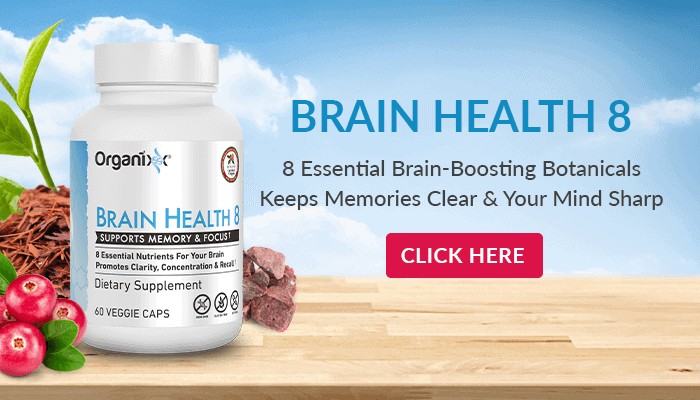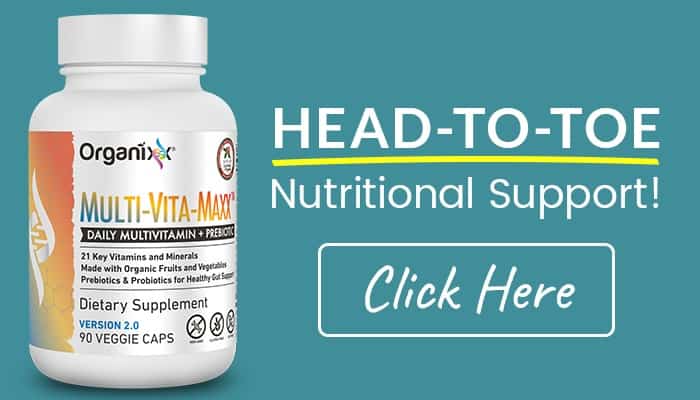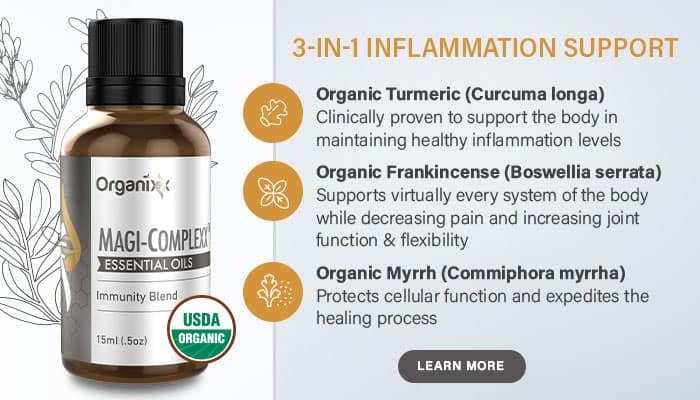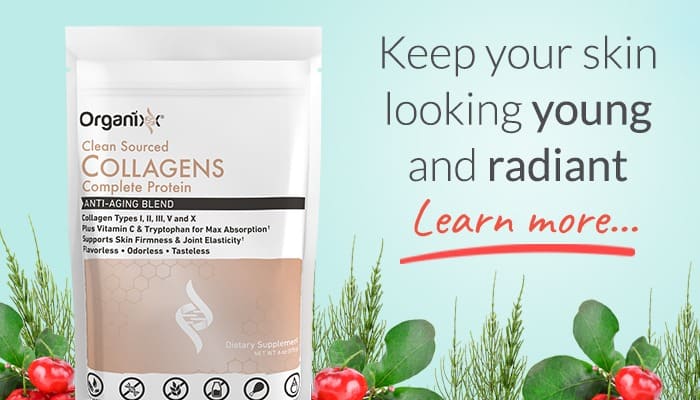Natural remedies such as herbs can be life-changing in how they can positively affect the brain and body. Bacopa is a little-known Indian herb that has been shown in some studies to be as effective as pharmaceuticals in its ability to calm the mind. It has demonstrated a positive effect on Alzheimer’s and dementia patients and may even have a role as an alternative therapy for ADHD.
The Role of Bacopa Monnieri in Ayurvedic Medicine
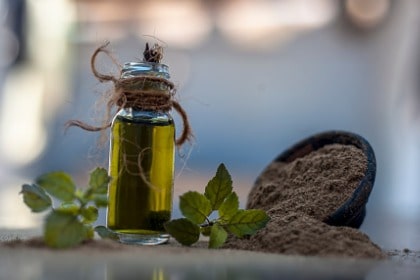
Bacopa (Bacopa monnieri or b.) is a traditional Indian herb that has been used in Ayurvedic medicine for thousands of years. It is known by several names including water hyssop, herb of grace, and Indian pennywort.
It is also sometimes referred to as brahmi, not to be confused with gotu kola – another ayurvedic herb that is sometimes called brahmi. These two plants are both amazingly beneficial but in vastly different ways.
Over the centuries, bacopa has been used in traditional Indian medicine (Ayurveda) for:
- digestive issues
- respiratory conditions
- back pain
- joint pain
- epilepsy
- and much more
It is most known, however, as a “brain tonic” for the many ways it can help the mind.
Bacopa Benefits: Improved Memory
Bacopa has been shown to improve memory and help calm anxiety in particular. According to research, B. monnieri has the ability to regulate certain brain chemicals, such as dopamine and serotonin [1], which are involved in learning, thinking, memory, stress response, and mood.
In 2008, researchers at Swinburne’s Brain Science Institute in Australia [2] analyzed data from 62 healthy volunteers who took bacopa for three months. The volunteers were given cognitive assessments before starting bacopa and then divided into two groups – those who received bacopa and those who received a placebo.

The researchers found that bacopa improved spatial, visual, and working memory significantly. Task performance timing also improved.
Earlier findings have shown similar results. Another Australian research team working in 2001 stated that their results suggested:
“that B. monnieri may improve higher order cognitive processes that are critically dependent on the input of information from our environment such as learning and memory [3].”
Bacopa Reduced Stress Responses & Boosted Mood in Study Subjects
Bacopa has also been shown to help reduce stress responses rather quickly. In another study at Swinburne conducted in 2014 [4], Australian researchers found that salivary cortisol levels went down overall in subjects who took both 320 mg and 640 mg of bacopa in two different occasions. The researchers also noted that mood improved in the participants as well.
Animal Studies Show Promising Role of Bacopa for Cognitive Decline and Depression Disorders
Promising studies have also been done on Bacopa’s role in regulating brain chemistry for those with schizophrenia. Cognitive decline is one of the unfortunate long-term effects of the disease and can also exacerbate the symptoms.
A 2015 Thai mouse study [5] found that Bacopa monnieri may be able to help. Researchers reported that Bacopa orchestrated positive changes in the prefrontal cortex, hippocampus, and other parts of the brain in a mouse model.
This finding and others like it may give hope to individuals with the condition since schizophrenia-related cognitive decline is something that modern pharmaceuticals have not been able to address.

On the other end of the spectrum, Bacopa monnieri has also been linked to improvements in depression disorders [6]. Antioxidant saponins in Bacopa can positively affect the nervous system. In particular, it can provide possible enhancements to the neurotransmitter GABA (gamma-aminobutyric acid), according to researchers at the University of Michigan [7].
As noted on the Michigan Medicine (University of Michigan) website, “Bacopa extracts also appear to have significant antioxidant activity in the brain, and other effects that may help protect brain cells [8].”
Bacopa Benefits for Type 3 Diabetes (aka Alzheimer’s)
It may appear strange that two conditions that seemingly operate on different parts of the body could be related. But conclusive evidence has proven that diabetic conditions can indeed lead to memory loss, the build-up of neurological toxins and, in some cases, full-blown Alzheimer’s Disease [9].
In fact, for more than a decade many health experts have been referring to Alzheimer’s as “Type 3 diabetes [10].”
The connection has to do with insulin. A 2015 report published in the journal Experimental & Molecular Medicine [11] found that Alzheimer’s disease is connected to imbalances in insulin signaling as well as the metabolism of glucose in the brain.
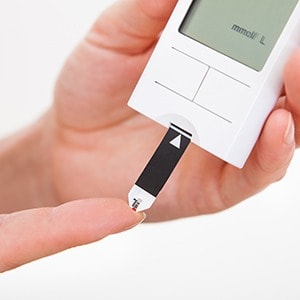
Yes, your brain contains insulin receptors as well! This may explain one of the reasons why individuals suffering from long-term metabolic syndrome often experience more cognitive decline than others who do not have the conditions [12].
Bacopa has been found to positively affect both metabolism and brain health. In fact, a 2008 investigation [13] published in the Journal of Ethnopharmacology discovered that bacopa protected brain neurons from oxidative stress while at the same time protecting against lipid peroxidation. The researchers noted that:
“…treating patients with Brahmi (bacopa) extract may be an alternative direction for ameliorating neurodegenerative disorders associated with the overwhelming oxidative stress as well as Alzheimer’s disease.”
Can Bacopa Help With ADHD?
An exciting possibility for bacopa is as a substitute for pharmaceuticals given mostly to children for Attention Deficit and Hyperactivity Disorder, or ADHD.
ADHD is characterized by difficulty in maintaining attention, hyperactivity and impulsive behavior, and usually begins in childhood. U.S. Centers for Disease Control (CDC) data collected in 2016 [14] found that approximately nine percent of U.S. children aged two to 17 years have been diagnosed with ADHD; this equates to about 6.1 million children and young adults.
Substances called bacosides are antioxidants unique to B. monnieri. They have been found to improve cognition by sharpening nerve impulses.
According to a 3-month long joint randomized clinical trial conducted by both Australian and Indian scientists [15], children with ADHD who took 50 milligrams of bacopa twice a day showed vast improvement in memory, logical responses, mental and behavior control and “paired associated learning.” What’s more, the effects seemed to be long-lasting for the children.

This presents a possibly natural and side-effect-free option for the millions of children with ADHD, many of whom are prescribed drugs for their condition.
One common pharmaceutical is Adderall. Adderall is an amphetamine that is commonly used in the U.S. for the treatment of ADHD as well as depression. One downside of Adderall is that it can be highly addictive. Other side effects include:
- mood swings
- irritability
- sleep issues
- restlessness
- heart issues [16]
Bacopa Side Effects
While there appear to be no side effects of taking bacopa, some do complain about the taste: it can be quite bitter. In addition, some studies have found that it may take bacopa a period of time for its benefits to be revealed.
For example, in general, studies show that cognitive improvements are much more noticeable after 12 weeks than they are at six weeks.
Finally, some individuals have experienced increased bowel movement as well as stomach upset with bacopa, although this is fairly rare.
The effects on cognition, mood, and stress responses can be noticeable with bacopa. Couple this with the fact that there are few side effects and this makes bacopa a go-to Ayurvedic herb for boosting memory, improving mental sharpness, and lowering stress levels overall – all much needed in our stress-inducing modern world!
Bacopa is an Ingredient in Brain Health 8
Bacopa monnieri is one of eight brain-enhancing and all-natural botanicals from the Amazon rainforest in Organixx Brain Health 8 formula.
The other superstar brain health ingredients in Brain Health 8 are:
- cat’s claw herb
- pau d’arco
- dragon’s blood resin
- camu camu
- cinnamon
- cacao powder
- guayusa
Better Focus… Crystal-Clear Thinking… a Razor-Sharp Memory… ALL Are Within Your REACH! Each and every bottle of our Organixx Brain Health 8 formula contains a total of 8 superstar ingredients, straight from the AMAZON rainforest.

Simply put, the first line of human defense against any type of infection is the immune system. It’s how our bodies keep the enemy out of the gates, so to speak, and it’s why maintaining strong immunity at all times is critically important for health and vitality. But are you confident that your own immune system is really where it needs to be?
Many people think they’re healthy until disease strikes and their immune systems are put to the test. They suddenly find that every cold, cough, flu, and stomach bug that goes around ends up taking root, no matter what they seem to do. And the only thing left is to try to manage their symptoms with whatever the local drug store has to offer. Is this really what true health and wellness looks like?

If you’re someone who finds yourself getting sick at the drop of a hat, or who constantly battles with some degree of feeling under the weather, then chances are you have a vitamin deficiency. You may be thinking to yourself, but I take vitamin supplements every day. To which you then need to ask yourself the question: are the vitamins I take really vitamins?
As strange as it might sound, many so-called vitamins sold at retail stores and online aren’t even close to being the same as the vitamins naturally found in food. They’re synthetic impostors that, at best, provide minimal wellness support. At worst, your body recognizes them as toxins, meaning they can actually make your health worse [1].
Synthetic vs. Natural: Not All Vitamins Are Created Equal
Vitamins are a multi-billion-dollar industry that is largely dominated by the pharmaceutical industry. Drug companies have figured out all kinds of ways to synthesize the compounds found in nature and peddle these artificial knockoffs to health-conscious people as dietary supplements.
Ascorbic Acid Is Not the Same As Real Vitamin C
Take vitamin C, for instance, which is one of the first vitamins people think of in relation to the immune system. Most of the vitamin C on store shelves today is actually ascorbic acid, a fractionated portion of real vitamin C that one expert in the field describes as the “antioxidant wrapper” portion of true whole food vitamin C [2].

Besides the fact that a bulk of it is manufactured in China from questionable ingredients (along with most other vitamins, it turns out [3]), this synthetic form of vitamin C is functionally incomplete. Ascorbic acid lacks the full-spectrum benefits of real vitamin C because it’s created in a laboratory with “dead” chemicals that the body has a hard time recognizing, let alone processing.
Is Your Vitamin A and E Fake?
The same is true of most vitamin A and E supplements, which are isolated molecular compounds that lack the complexes and cofactors necessary for activation within the body. These inferior vitamin isolates simply can’t perform like their natural counterparts because they’re fake, to put it in basic terms.
Unfortunately, most vitamin supplements on the market today fall into this inferior category. Unless they’re derived from real, whole foods (which most of them aren’t), they will always pale in comparison to what you would otherwise naturally find in fresh fruits and vegetables, as well as in pasture-raised meat and dairy products.
Read the Vitamin Ingredients Label

If the ingredients list on a vitamin bottle lists the vitamin’s common name alongside its scientific name in parenthesis, it’s almost guaranteed to be synthetic.
This is true whether you’re looking at a bottle of vitamin C or a multivitamin containing vitamin C along with many other vitamins. If it doesn’t specifically say that it was derived from real food, in other words, then it almost certainly wasn’t.
Why Whole Food Vitamins Are Superior to Synthetics
While fake vitamins can, in some cases, provide some benefits, they’re altogether inferior no matter how you look at it. Because they lack certain biological “partners in crime,” synthetic vitamins actually function more like pharmaceutical drugs than actual, real-life vitamins.
In order to qualify as a vitamin, a vitamin compound or biochemical complex has to possess the ability to exert vitamin activity. Actual biological and cellular changes have to occur, in other words, otherwise that vitamin is a fraud.

Using a car as an analogy, many people think of vitamins as simply the fuel that goes into it. But in reality, real vitamins are the gas, the carburetor, the ignition, the spark plugs, and everything else that’s necessary to actually make it start and go.
So, in a sense, synthetic vitamins really are just the gas without the rest of the car. What good can they do all by themselves? Not much. And that’s the gist of what differentiates real vitamins from fake vitamins: real vitamins get the job done, while fake vitamins do a whole lot of nothing, in many cases.
Vitamins Require Enzymes & Minerals to Synergistically Support Healthy Immunity
At this point, you’re probably asking yourself: “can’t I just eat food and skip taking vitamins altogether?” If only it was that simple. The truth is that many foods today don’t contain the vitamin content they once did. This is due to a variety of factors, the most notable being chemical-based agriculture, poor soil quality, and heavy processing.

In essence, most food today has been stripped of its nutritional content, meaning it’s a mere shell of what our ancestors ate. As a result, most people, it’s safe to say, are now severely nutrient deficient, which means they’re not getting nearly enough of the bioactive vitamin complexes they need to stay healthy.
What’s worse, the synthetic vitamins that many people take to try to fill that nutritional void aren’t helping, and in some cases are actually hurting. Simply put, synthetic vitamins are an incomplete package, not just because they’re functionally “dead” but also because they’re missing the enzymes and trace minerals necessary to synergistically support a healthy and robust immune system.
How Fake Vitamins Can Actually Be Harmful
Whenever you take a synthetic vitamin in its isolated form, your body tries to compensate for these missing cofactors by pulling whatever it can from your body’s own backup reserves. Over time, this process depletes your body of its vital nutrient stores, creating an even worse deficiency. In other words, synthetic vitamins can cause more harm than good over time.

Your body has been programmed to expect these vital cofactors, and when it encounters synthetic vitamins that don’t have them, it simply doesn’t know what to do. Some of them end up building up in the liver, while others are expelled undigested. In short, synthetic vitamins simply aren’t bioavailable, meaning your body can’t assimilate and use them for any beneficial purpose.
According to the “experts,” synthetic vitamins are no different than real vitamins [4], but independent science is clear that they couldn’t be more different from one another. In order to derive any real benefit from vitamins, they have to come as a package deal, and this is something that only nature can provide.
Want Vitamins for Immune System Support? Whole Food Vitamins Are the Only Way to Go
So, if the modern food supply is lacking in vitamins and synthetic vitamin supplements are no good, is there some other alternative? We’re glad you asked because there is.
As it turns out, not all vitamin supplements are created equal, and there are real varieties made from whole foods that contain all the goodies you want, and none of the junk you don’t.
Since vitamins require enzymes in addition to trace minerals for effectiveness, a high-quality whole food vitamin supplement will be enzyme activated. Fermentation is also beneficial in that it makes food-based vitamin compounds easier for the body to digest, thus maximizing bioavailability – meaning more bang for your buck.

You’ll also want to look for whole food vitamins that come from organically-grown food, and preferably in “living,” nutrient-dense soils. This will ensure that the vitamin content is as close to optimal as possible, just as nature intended.
As for what you’ll want to look for in a high-quality whole food multivitamin, vitamins A, B, C, D, and E are a given, along with K. You’ll also want to make sure that trace minerals are included in the forms of things like calcium, iodine, zinc, magnesium, and selenium.
Let’s take a look at each one of these vitamins to see how they help in supporting a strong and healthy immune system.
What Vitamins Boost Your Immune System?
Vitamin A.
Carotenoids like beta carotene, which function as precursors to vitamin A, possess powerful antioxidant properties that have been scientifically shown to help boost immunity and causatively ward off cancer [5].
Vitamin B.
Technically a family of vitamins, B vitamins (and specifically B6 and B12) support immunity by managing cell division and growth and boosting the production of disease-fighting white blood cells. B vitamins as a whole also help to support a healthy gut microbiota [6].
Vitamin C.

Often the first vitamin people opt for when sick, vitamin C is a type of fuel for the immune system to perform vital functions such as the production of phagocytes and T-cells. It’s been shown to be beneficial against respiratory tract infections, and may also help against pneumonia, malaria, diarrhea, and other conditions.
Vitamin D.
Also known as the “sunshine vitamin,” vitamin D acts as a buffer against autoimmunity, which is when the body attacks itself, as well as a defense against infection. Research has shown that vitamin D deficiency is linked to increased illness and immune dysregulation.
Vitamin E.
A potent antioxidant, vitamin E is another fat-soluble family of vitamins that helps to support strong cellular immunity and the proper differentiation of immature T-cells [7]. Research shows that vitamin E can help to not only protect immune cells from oxidative stress, but also aid damaged ones in getting repaired [8].
Vitamin K.

A necessary cofactor for some plasma proteins, vitamin K has been shown to support healthy immune and inflammatory responses throughout the body, particularly those mediated by T-cells. Vitamin K is also linked to supporting a balanced inflammatory response, which is associated with decreased disease risk [9]. (Tip: leafy greens are among the best food sources of vitamin K.)
Trace Minerals.
In order for all of these vitamins to accomplish these tasks, the presence of trace minerals is essential. Without them, vitamins aren’t able to perform their biological functions as intended, rendering them useless or even toxic. But with whole food vitamins, you don’t have to worry about uselessness or toxicity because they’re the complete package.
So, What’s the Best Vitamin to Boost Your Immune System?
The title of this article is actually a bit of a trick question. It isn’t a matter of whether vitamin C is better than vitamin D or A is better than E because all vitamins are necessary for strong immunity.
Thus, the real answer to the question is this: whole food vitamins are the best vitamins because, when done right, they’re exactly what our bodies need to stay strong, healthy, and fit… especially for such a time as this.
If you’re not getting all the nutrients and antioxidants you need from food, your best source is whole food vitamins. Organixx Multi-Vita-Maxx contains 21 uniquely fermented vitamins and enzyme-activated minerals that are more “bioavailable” and easily absorbed by your body than the synthetic compounds found in most supplements.
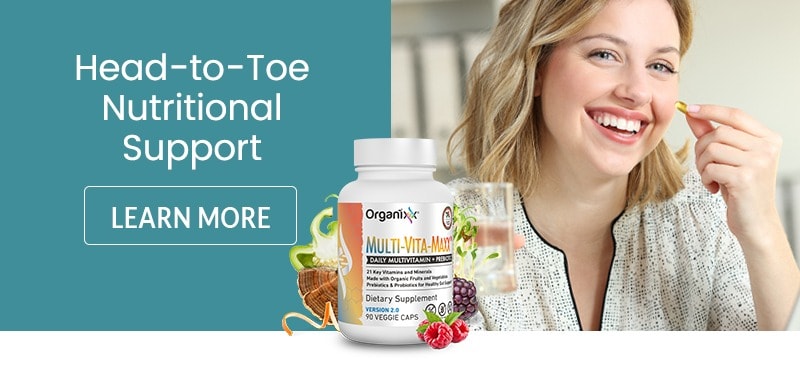
In this interview…
- 04:30 – What are the worst & best supplements? (4 levels)
- 05:35 – What supplements cost to make vs. what companies sell them for
- 10:32 – Why black pepper/piperine and turmeric aren’t always a good match and what else makes turmeric more bioavailable
- 12:32 – Why whole food supplements cost more
- 13:09 – The supplement type you might as well dump in the trash
- 15:04 – Why RDAs are so deceptive
- 16:05 – One way to assess the quality of your supplements
- 18:05 – Is your supplement company testing for glyphosate?
- 18:46 – Why your bone broth MUST be organic
- 34:18 – Why you need vitamin C if you’re taking a collagen supplement
- 35:00 – Is there such a thing as vegan collagen?
- 37:40 – Patrick’s real age 😉
Transcript
Patrick Gentempo: I’ve got Jonathan Hunsaker, the founder of Organixx on the line. I think I got them on correctly here. Jonathan, are you there?
Jonathan Hunsaker: I am. Can you hear me, sir?
Patrick Gentempo: Looking good. Yeah. I not only hear you, I see you.
Jonathan Hunsaker: Nice.
Patrick Gentempo: You’re getting in at some of the fun here. You’ve been hearing people torturing me about my age.
Jonathan Hunsaker: I am. I was going to go with the high 40s; 48.
Patrick Gentempo: Now he’s going to get my best attention throughout the rest of this. Do you know my age actually or you don’t?
Jonathan Hunsaker: I don’t. I don’t know your age.
Patrick Gentempo: Oh, wow. Oh, I thought you knew. Okay, so you’re going to go with 48. Okay, that’s a good guess.
Jonathan Hunsaker: I am.
Patrick Gentempo: We’re going to give something away to the first person who guessed right. I think maybe too many people looked it up so I can’t… They’re going to be looking up. All right. At the end of our interview, Jonathan, I’m going to go ahead and reveal the age. We’ll see who got it right. I’m really wondering about that person who guessed to be 74 though.
Jonathan Hunsaker: Yeah, I think it takes some guts to go on and ask people to tell your age. Put that thick skin on.
Patrick Gentempo: Or maybe they’re just trying to say that I must look remarkable for my age or something. I don’t know. So Jonathan, thanks for taking time on a Saturday to be with us.
Again, I could only handpick a few people to be on during our live broadcast and quite frankly, they’re people who are utilizing or are have products that they’re talking about or subjects they’re talking about that are incorporated into my life and my family’s life, and certainly, Organixx is one of those.
As I explained earlier, when you weren’t on, I said, “Hey, this isn’t a pitch-fest.” We didn’t get here to say, “Hey… At one point, I started cracking up because unwittingly, I said, “I feel like we’re starting to sound like QVC.” That’s not what we’re supposed to be doing here.
But the bottom line is people have questions and then people have challenges they’re trying to overcome and we can give them the information. But if we don’t have a solution for them, I feel like they’re left hanging.
I can say that probably the most asked question along the way was, now that I’ve had all these experiences and have been with all these people, what are some of the things that I’m taking? I want to say that, listen, I think there’s an extraordinary amount of great products out there. Certainly, I’ve done my research and I take some of these products and other people have their own conclusions that they’ve drawn.
But one of the things I loved about our interview, Jonathan, was you simplified another one of the most popular questions being asked, which is, how do you rate the value of a particular supplement?
Because you can go with any type of supplement, call it a bone broth protein, call it a multivitamin, call it a curcumin, call it a B complex, whatever it might be, and you’ll get ranges of prices that are almost incomprehensible at how the difference between the lower and the higher and how far a spread there is.
And then people say, “I want to make an investment and get good value for my money, but man, it’s all over the map. How do I sort this out?” And I feel like you did one of the best jobs at sorting that out. So can we have that conversation?
Jonathan Hunsaker: Absolutely. Yeah, and thank you for having me on here. I’m not the guy that’s usually in front of the camera. I’m used to being behind the scenes.
Being interviewed, number one, gets the nerves going. Doing it live, also adds more to it, so bear with me as I kind of work through some of the nerves and deliver the information that you’re looking for.
First and foremost, I mean, I’m not a doctor, I’m not a scientist, I’m not a researcher, I’m not an academic. I’m actually a high school dropout. I dropped out to start my first business. What I am is, I’m an entrepreneur, I’m a businessman, which means I’m just really good at solving problems.
I’m really good at finding people that are smarter than me at doing things. And so I really want to set that context because it sets the context for the whole conversation.
What I’m going to share with you and what I’ve discovered through my own health journey and my journey into the supplement space is different than what a lot of supplement companies want to talk about. Kind of exposing what’s going on behind the scenes, really pulling the curtain back on really what’s going on, and adding transparency to an industry that has been very secluded, so to speak. Been very hush, hush. Been very profit-driven.
One of the ways to try to really explain the different qualities of supplements is really knowing what you’re looking at. So I think the bare bottom is a synthetic supplement.
These are going to be your One A Day’s, these are the ones you see commercials for on TV. Synthetic vitamins, I mean, really your body doesn’t even recognize it as real food. It’s not even a bioavailable element. Bioavailable meaning how much can your body absorb it?
These synthetics are created in a lab. Most of them are derived from an oil by-product like coal tar or different things like that. And so they’ve synthetically created this vitamin to have the same structure as it would appear in nature, and then they put it together in a pill and they’ve sold it to you saying, “Look, here’s a great vitamin for you and it’s going to give you 15,000% of the daily recommended allowance for vitamin C.” Ascorbic acid, that’s it, that’s a great synthetic example. So that’s bottom of the barrel. Your body can’t really recognize it.
They’re probably selling for $30, $35 for a multivitamin. It costs about $2 to manufacture and bottle and package that supplement, that 30-day supply.
What you find, unfortunately, as I dug deeper in the supplement industry when I first got into it, the multiples that a lot of these companies have is astronomical. We’re seeing multiples with a lot of products out there, anywhere from 10 to 12, upwards of 20. So, most supplements I would say, is about a 12X multiple, kind of gives you an idea.
If you’re buying something for $36 at the store, know that it costs about $3 to bottle it, for most products. Now, the higher the quality of the product goes, which we’re going to talk about, those margins go down. Those multiples go down because you have to stay competitive and there’s no way I could sell our supplements at 12X cost. Nobody would ever buy them. So bottom of the barrel would be a synthetic.
The next level up would be a whole food supplement. And it’s just what it is. It’s a whole food. There’s many different ways to process that food or that botanical, but essentially it’s been dried, it’s been concentrated and encapsulated.
That’s going to be better because your body can recognize it more as a food. It’s going to be more bioavailable. If you’re going to take a supplement and you’re not going to do a synthetic, at least make sure it’s whole food.
The next level up is going to be a whole food supplement that is organic. This is where organic, I think, really matters in a big way because if it’s organic then you know that it hasn’t been sprayed with pesticides, herbicides, insecticides.
And when that botanical or food is being harvested, and it’s being dried down and encapsulated, those pesticides, herbicides, insecticides, those poisons, are staying on that botanical. Now you’re just getting a high dose of it, just like you are of a higher dose of the nutrient when it gets dried and when it gets encapsulated.
So for me, I mean, a whole food supplement is good, but I would really make sure that it’s an organic ingredient.
The other thing, and this is a big debate, is organic food, does it have a higher nutrient density than a non-organic or a GMO foods versus a non-GMO? That’s another thing, is if it’s organic, that also means that it’s non-GMO.
I’m not going to go down the argument of is it more nutrient-dense or not? I believe that they are. I think that pesticides, herbicides, insecticides are destroying the soil. They’re destroying the bacteria and all the organisms that are in the soil. If the soil is not nutrient-dense, then it cannot be absorbed into the plant, the botanical, whatever is being harvested there.
But that argument aside, whether it’s more nutrient-dense or not, the fact that you’re ingesting poisons because it’s been sprayed with insecticides, herbicides, is clearly not good. And most of us are taking supplements or some sort of supplement to get healthier. If it’s not organic, then now you’re taking a bunch of poisons to go with that “healthy” supplement.
The challenge also is, I mean, consider your microbiome and your gut and what it’s made up of, and all the bacteria and all the living things that are inside of us. If you take an herbicide, insecticide, pesticide, that’s getting that poison, it’s now killing all of this stuff inside of your gut.
I don’t remember the exact number, but it’s like 45 billion cells are of foreign things, of bacteria, viruses, different things in our body. And we only have 35,000 billion cells in our body that makeup us. So it’s almost an argument that there’s more things that aren’t us, than us, inside of us.
And when we take these poisons and we ingest them, we’re killing it. And so, we’re really causing a lot of damage, in my opinion, when we’re eating non-organic foods and when we’re especially taking non-organic supplements. Just that high concentration, I think, is extremely harmful.
So, synthetic, whole food, whole food organic, the highest level that I think is out there is a whole food organic that’s also been sprouted or fermented, if at all possible.
The fermentation process, it opens up a whole plethora of new nutrients. It also starts the breakdown process and it releases the enzymes. It starts breaking down that food, that botanical. And when you start that breakdown process and you’ve released those enzymes, when it gets inside of your body, you now need to use less of your own enzymes to break it down and it makes it more bioavailable. It makes it easier for the body to absorb it.
A good example of this is let’s say, turmeric. Turmeric is a very popular thing right now. A lot of people are mixing turmeric with black pepper, piperine, things like that to make it more bioavailable.
The challenge is, is what are the side effects of black pepper, piperine, BioPerine, with prescription medications and things like that?
So yes, black pepper makes it more bioavailable, allows you to absorb the curcumin much better, but you can do it in a much safer way by simply ingesting a fermented turmeric. We make a turmeric supplement as well, called Turmeric 3D. We triple-ferment it and now it’s just as bioavailable, which means it’s already started to breakdown; process. Your body can easily absorb it without having something like a black pepper or something that may cause harm, cause issues in somebody’s gut.
Probably a very long answer to a very easy question, but I’m really trying to deliver the best information possible. It’s really what we stand for at Organixx is just informing the public.
It doesn’t matter if you buy my supplements or not. Quite frankly, I just want to inform people so that more people are screaming for organic supplements. It’ll make them cheaper for all of us. And so people really know what they’re taking because I think that matters. I think there’s just so much misinformation.
So synthetic, don’t even waste your time. Whole food, better. Whole food organic. I would highly suggest if you can find whole food organic that is fermented or sprouted would be the highest level
Patrick Gentempo: That is so what I was hoping you would say, I mean, the whole thing. And it really does, I think, give it an easy framework to understand this hierarchical system of supplements, is from the low to the high.
I happened to know this because from the business side, as you’re talking about, I happened to know that for the type of supplements you’re putting out, the margins aren’t nearly as good as some of these other supplements.
You might’ve said this already, but you also mentioned something to me that… Because would people say, “Okay, let’s say that I’ve got a synthetic supplement that is $20 a month, and this organic whole food supplement, maybe even it’s fermented or sprouted, is $45 a month. It’s more than twice as much.”
But the premise or one point of view would be, you’re going to get better benefit from taking the other supplement every other day, the good supplement, then from a synthetic every day. So is that right?
Jonathan Hunsaker: All-day long, twice on Sunday. I mean, really the synthetic supplement, you might as well just open it up and dump it in the trash, or in your toilet.
The way that you know that your body is not using it, and we’ve all seen this, is you take that cheap supplement and all of a sudden your urine is glowing yellow. Right? That means it’s just passing right through you, it’s not being absorbed.
What you talked about is a really good point in the context too, not just that that expensive one, our multivitamin I think is $50 for a month’s supply, you might only be able to take one every three days. You’re still going to get more than that synthetic or even that whole food supplement because it’s been sprouted, fermented, it is organic.
And like you said, it’s the same. It may be two and a half times the cost or maybe three times the cost, but you’re not getting anything from the lower ones. Right? And it’s not doing any good.
The other thing that you brought up that I really want to talk about is, what’s on the label and how bioavailable is it? So, ascorbic acid, which I used before for vitamin C. Most vitamin C supplements out there, that’s what it is, it’s a synthetic; it’s ascorbic acid.
It’ll say, “2,000% your daily value. And it sounds all phenomenal, “I’m going to get 2,000% of the vitamin C I need. It’s going to help me fight off this cold.”
The challenge is, you’re maybe absorbing 1%, a half a percent, not even that, because it’s not even recognized as a real food. As opposed to taking a vitamin C supplement that only says it’s 100% of the daily recommended value. You’re absorbing 60%, 70%, 80, 90. It’s very rare that you’re going to absorb all 100%.
But let’s say you’re getting in those 60, 70, 80s, it’s a massive difference versus that one that says it’s 15,000% and you’re getting a fraction of 1% absorption from it.
Patrick Gentempo: RDAs can be deceptive very often and there’s this sort of misnomer that bigger is better. There’s this, “This is 2,000% of the RDA. Well, this is 3,000% of the RDA,” But in the context of understanding what you just said, those numbers are really meaningless. You have to have a deeper layer of understanding relative to bioavailability, absorption, and the like, so I think that those are important considerations.
I like this dimension of the conversation. So we’ve spoken to people who have academic backgrounds and researchers, we spoke to people who are clinicians, who are actually seeing patients every single day and working in these realms. You really have kind of the manufacturing in business context.
We talked about source materials, I guess. Would that be the right characterization of if it’s organic and it’s fermented or sprouted, et cetera, that’s the source that’s coming in? What would I want to know as a consumer about not only the source materials but the manufacturing practices themselves? Does that matter?
Jonathan Hunsaker: It does matter. There’s a few things to look for, and [I’m] trying to think the best way to answer the question. One of the best is looking at the company that you’re working with, and what do they stand for, what are their core values? How transparent are they? What kind of record do they hold?
I mean, the reason I say this is, anybody can start a supplement company. I’m living proof of that. I started a supplement company, and again, I’m not a doctor or a scientist.
The good news is I have a whole lot of integrity and I have a whole lot of ethics that I want to build the best and the greatest really for myself and my family, and then for everybody else that wants to come along [for] the ride with me. You’ve got to find out the company and what they stand for, first and foremost.
Second, is asking for transparency. We do something that… Because it’s really hard to know, it’s really hard to believe, but you can pick up the phone and call a lot of these companies.
You can call up Centrum or some of these synthetics and they’ll tell you, “Hey, these are all synthetic materials. Hey, these are all derived in a lab. This is where we get our stuff.”
If somebody tells you that it’s whole food and it’s organic, ask for proof. “So, show me.” We send all of our products off to be third-party tested by a company called NSF. They do a whole lot of the certification for supplements to make sure that they are approved for Olympic athletes and they do a whole lot of third-party testing.
And we test for glyphosate, the number one active ingredient in Roundup that Monsanto puts out and I’m sure a lot of the audience here is aware of. I mean glyphosate, it’s horrific to have in there and to be ingesting into your body, yet that’s the number one herbicide that’s used out there.
So we third-party test all of our products for glyphosate, and we show these test results on our website. If it’s not published, you can email us or give us a call and we’ll send you a copy of it. They should all be published at this point. But we test for glyphosate, we test for GMOs, we test for other pesticides, herbicides, and insecticides. We test for heavy metals and we show all of that.
I don’t want to go too far on a tangent, but when bone broth protein first came out and it started hitting the market, one of our top competitors was promoting how healthy it was and how great it was, yet it wasn’t an organic bone broth.
This is really important because if it’s a chicken bone broth and that chicken is not fed an organic diet, which means it’s getting a GMO feed, which means it’s also very high… It’s got a ton of herbicides and pesticides sprayed on it.
Well, that glyphosate itself, is stored inside of the bones. That’s where most of it is stored. Whenever we ingest that kind of a poison, chickens especially, it’s stored inside of their bones and now you’re boiling down these bones and you’re making a bone broth out of it and you’re getting these high concentrations of glyphosate and you’re also getting these high concentrations of other heavy metals.
So while there’s all this information, like, “This bone broth is really healthy and take this bone broth,” but what you’re not realizing is you’ve got to dig a little bit deeper. You can’t believe all the hype.
That’s another thing that I’ve really learned is, I mean, if these companies out here would just spend more money on ingredients, and research, and creating a better product rather than all their money on marketing and selling it all, we’d all have much better supplements to choose from.
I’m going on a little bit of a tangent, but it’s important because bone broth is really big right now. We’re one of the very few, if not the only, that does an organic bone broth.
I’ve done interviews with Jeffrey Smith, who’s kind of the godfather of the non-GMO movement and the organic movement. And I mean, he’s talked about how detrimental it is and where that glyphosate gets stored in the bones and then you make a broth out of it.
And this goes for buying any kind of broth, whether it’s a powder or whether you’re buying a bone broth in the store that’s already in liquid form, you’ve got to make sure it’s organic.
I’m trying to get back to your original question. How do people know what to look for? You’ve just got to do a little bit of the research and you’ve got to see what that company stands for, see what their core values are, and let that kind of help guide the way.
But don’t be afraid to make phone calls. Don’t be afraid to go look at their website, look at reviews, email them, and have proved to you. If they’re making a lot of claims, ask them for proof. We do that with that third-party verification, that third-party testing.
Another thing that we do, and I’m not trying to turn this into an infomercial at all, because if you buy our supplements, great, if not, no worries. I’m just here to educate.
There’s another big thing that happens in the supplement space where people advertise like turmeric or let’s use ashwagandha. People talk about, “Hey, ashwagandha is great and it’s going to help you do this, that, and the other, and it’s an adaptogen, it’s going to help you handle stress. There’s all these studies to back it up. Here’s 700 studies to show how good ashwagandha is.” And they tie all of these studies to their supplement.
But the challenge is, you don’t know the quality of ashwagandha that was used in those studies. That study may have used a very clean, organic, high potent ashwagandha, whereas this company has now said, “You know what? I’m going to source the cheapest ashwagandha I can get, out of China, that’s not organic. It’s costing me a few dollars a kilo.”
They’re making an ashwagandha as a supplement or they’re blending it with another blend of other ingredients. They’re making it for a few bucks and selling it for $50 bucks and touting all of this amazing benefits from this ashwagandha that’s in there.
It’s BS, is what it is, because you’re not going to get those same results. This is why a lot of people say, “I didn’t get results, or, “I don’t like supplements,” or, “I don’t feel a difference on them.” Or, didn’t get all of these things that they wanted.
It’s because they’ve used all of these studies to build up the benefits and to sell this big dream, but then they put a crap supplement, a crap version, inside of their supplement and sell it to you.
What we’re doing, and we’re transitioning a lot of our formulations this way, even though we already buy really clean organic ingredients, we now use an ashwagandha called KSM 66.
It’s a patented ashwagandha, which means it’s a very specific strain, and it has double-blind placebo-controlled studies behind it, that prove its efficacy.
So now, I’m not just saying, “This is what ashwagandha does. Buy my product because it has ashwagandha in it.” I’m actually saying, “This is what KSM-66 ashwagandha does and these are the specific studies proven to go with that specific ashwagandha.”
And listen, these are the things that I have to go through as a supplement company owner, to try to win the trust of the audience because it’s been destroyed so much by a lot of unethical companies out there just trying to make a quick buck. But I’m glad to do it. I’m happy to do it because I make all these supplements mainly for me and for my family, and then for the people that follow us, it’s an added bonus.
On a side tangent, Patrick, five years ago when I kind of started in the health space, I was 270 pounds, I was smoking a pack and a half of cigarettes a day. I was drinking six, seven nights a week. I mean, I’d been on my own health journey when I started the supplement company four years ago. I was in a good place where I was able to go out there and kind of start looking at what did I need to be healthy and that’s kind of how this whole thing began.
I just share all that to share a complete picture of, I’m not that academic, I’m not that scientist, and I’m not that guy that can show all of these letters behind my name.
But I am that guy who’s been through that struggle of being extremely depressed, extremely unhealthy, putting my health last, and then going out and being fortunate enough to have the means from other business ventures to go and hire the best people in the world to educate me and then start putting together the supplements that I needed and that others needed, to kind of get us to where we are now. Man, you ask quick questions and I give you like 8-minute, 10-minute answers. I hope that’s all right.
Patrick Gentempo: Listen, I’m here for four hours. It’s great.
Jonathan Hunsaker: You got it.
Patrick Gentempo: And believe me, I’ll jump in if I feel like we’ve got to move it along. But no, those are great answers. I think, here’s what the takeaway is, you’re watching this right now. This is what I think the takeaway is for what Jonathan was just talking about.
Most people want to just be told, “Do this, take that, what have you,” and certainly, we have been showcasing certain supplements. You could see, from a variety of different people and they have their own kind of complexion, their own story, their own point of view.
But in the end, I think what really matters is that, if you were listening to what Jonathan just said, is that there’s more to it than just labeling. There’s some understanding, but the good manufacturers are very forthright in telling the deeper story, like what Jonathan was just talking about with ashwagandha. I almost said it wrong. It’s been four hours.
But that not only is it saying, “Okay. Hey, we have some part of an organic sourced supplement here,” but there’s research behind it. It’s a particular strain of the particular supplement. It is used in a way that was researched and delivered in this way.
I spoke to somebody once who was a manufacturer and they talked about organic milk thistle and he said, “I can get organic milk thistle… I might be a little off in numbers. Like $4 a kilo, but the stuff I’m getting is $36 a kilo.”
You can call them both organic milk thistle, but they are not the same thing. And I’m literally spending four or five or six times the amount because the particular way that this milk thistle, the soil that grows in, the way it’s harvested, et cetera, this stuff matters.
So what I know, and I think if you just heard what Jonathan said, when a manufacturer is actually making the greater investment and going deeper, they usually want to write about that, and talk about it, and they’re referencing it on the website.
And the other thing is the third-party testing. I think you might know this Jonathan, when you talk about glyphosate and GMOs, but we did an entire docu-series on GMOs: GMOs Revealed.
Jeffrey Smith, who you mentioned, was in our docu-series. He was one of the featured people in it. We know how devastating glyphosate is. And incidentally, we were called conspiracy… I can’t tell you the horrible names I was called.
Kids around the world were going to starve because of the docu-series that we did on GMOs. And of course, here we are now a couple of years later, totally vindicated, multi-tens, in some cases, hundreds of million-dollar awards given to people who are terminally ill with cancer, as a byproduct of glyphosate because Monsanto lied about it. So, we were right in the docu-series.
These things matter and as you can see, when somebody has a context, like Jonathan is giving you here, saying, “Hey, we third-party test for glyphosate. We don’t want that stuff in our supplements.” It’s easy to turn a blind eye. It’s less expensive to turn a blind eye to these things.
But when you know better… I’m paraphrasing the expression that the darkest corners of hell are reserved for the people who know and turn a blind eye. It’s basically, when you know better, when you know that your product is compromised, if it has glyphosate in it, and at the same time saying, “But if I test for it and find it there, it’s a hassle. It’s more expensive, et cetera.”
No, you do the right thing. The right thing is send out to the third-party lab, look at your stuff, see if it’s got glyphosate in it. And when it doesn’t, tell the world about it. And if it does, you have to change your source materials.
I think the good news is that I believe that people who are doing it right, like Organixx, they are doing the testing and then they’re publishing that testing on their websites and disseminating that information.
People who have something to hide, usually are hiding it. They’re not publishing, they’re not doing the third-party testing. And that to me, is a big, big clue.
So I congratulate you, Jonathan, for going those extra steps and literally… Because I think what you do is, you’re forcing the hands of all manufacturers.
If you’re out there doing this, it’s hard for them to exist at the lower bar. They have to step up their game. And I think you’re raising the game for the whole supplement industry through those types of practices.
Jonathan Hunsaker: And I appreciate that Patrick. I do this when I do other interviews or things. It’s, whether you buy our supplements or not, it doesn’t matter to me as much because, in the grand scheme of things, I just want people to go out there and ask for organic ingredients in their supplements.
And yes, you can ask for them from us and you’ll always get them, but I don’t mind you asking the other 5,000 companies out there, “Are yours organic?”
Because it’s the same thing; the more that we have people demanding organic, then the more organic farmers that we have, the cheaper that we can all get the organic ingredients, and the cheaper we can make these organic supplements.
I mean, quite frankly, I hate that we have to label organic. I think these other guys should be labeling that they’re non-organic. I feel this way in the food industry and all of that. And it’s going that way. I mean, those that are paying attention, organic foods are becoming less and less expensive. There’s a lot more people going organic.
The movement and the understanding and the global consciousness that is coming that is growing around organic and non-GMO, it’s undeniable. Wait a few more years and wait and see, if it’s not organic, if it is GMO, it’s going to be fewer and far between. At least I hope, and I think that we’re going in that direction.
Patrick Gentempo: Well, you and I both hope that. Justin is sitting to my right here and he’s on the live thread. We’ve got floods of comments and questions coming in. I don’t know if you’ve seen some of the prior things, but we’ve been doing kind of these giveaways, say for the next 20 people, that buy Supplements Revealed Gold Package, we’ll add a something to that package.
And we already, just so everybody knows, in your Gold Package, there is an Organixx supplement kit of a lot of the products that Jonathan was talking about. Really good stuff.
As a matter of fact, if I’m not mistaken, Jonathan, the retail value of that is in excess of $200 or something, if I remembered correctly.
Jonathan Hunsaker: Yeah. I think we’re doing a couple bottles of the Multi-Vita-Maxx, which is our multivitamin and also our 7 Mushrooms, which is our-
Patrick Gentempo: … the mushroom.
Jonathan Hunsaker: … fermented organic mushroom blend.
Note: The free product giveaway promotion discussed by Patrick and Jonathan was for participants during the live broadcast on Feb 29, 2020. It is no longer available.
Patrick Gentempo: Yeah. And that’s already going to be there when you buy a Gold Package, no matter if you bought it already or if you’re buying now.
Do you want to throw something in for the next 20 people? Actually, it’s going to have to be 40, because we’ll give it to 20 that buy right now, and I want to balance it for the other people. Say, we’ll randomly select 20 other people who already bought, so they are not penalized for not buying, saying that they have an opportunity to get it too. And no pressure, you don’t have to give anything if you want, but if you’ve got something and say, “Yeah, we’ll throw this in for the next 20 people,” what could that be?
Jonathan Hunsaker: I’d love to. I’m trying to think what is it that… Maybe we can poll your audience if they’re on there live now. What we also did is we’ve now gone… I went down the rabbit hole of supplements and that rabbit hole got so deep, it’s clearly why I have a supplement company now.
We now went down the rabbit hole of skincare and we’ve released a fully clean, with a vitamin C serum, that has no preservatives in it and things like that.
We also have an eye cream. I’m happy to do one of our vitamin C serums, one of our eye creams, again, fully organic, top of the line, no preservatives, none of the parabens, none of the other craziness that’s out there, no fragrances. Our stuff will actually go bad if you don’t use it in a year. It’s not going to sit in your bathroom for 10 years and still be good.
We can do our eye cream. We can do our vitamin C serum. The last thing we do is our collagens. We have a Clean Sourced Collagens. Again, collagens, we can’t get certified organic, but I can ensure that all of the places that I get, all of the ingredients that I’m getting are super clean and organic.
Our Clean Sourced Collagens, we get our bovine from grass-fed, pasture-raised cows in Argentina. The collagens that we’re getting from the fish is a wild-caught Alaskan pollock that is caught in the Atlantic Ocean, not the Pacific Ocean. That matters to some of us. As well as organic chicken bone broth and organic eggs.
We’ve also, just to give a quick education around collagens, by the way, we’ve put vitamin C in there with organic camu camu and acerola cherry.
The reason vitamin C is important is because if you are deficient in vitamin C, not only can your body not make its own collagen, but you can’t absorb collagen either. So there’s a lot of people taking collagen supplements, but if you’re deficient in vitamin C, you’re not getting near the benefits from it.
It’s also a multi-collagen, so it has five different collagens in there. I think we’re also putting some zinc in there to help the absorption of it. But our Clean Sourced Collagens is absolutely amazing. It’s quickly become one of our bestsellers.
So I love, for those that are okay with animal products, it is not a vegan product clearly, because it is a collagen. There’s no such thing as a vegan collagen. There are vegan products out there that help increase the production of collagen, but there’s no such thing as a vegan collagen.
I’m happy to do the collagens. Now that I think about that, if there are people that want something that goes to both sides, our OrganiGreens. We have a green juice powder where we’ve literally made juices and then dehydrated it down into a powder, that has 71 different ingredients.
I mean, Patrick, my challenge here is picking which one to give you because now I feel like I’m going down my whole line and want to talk about the amazing benefits of each one.
I’ll put it like this, I’m happy to add $150 worth of our supplements. That’s essentially about three supplements, that your viewers can choose. If you want to just have them email us, so I can give you a special email, they can reach out to us, they can pick any three products in our line that they want, if that makes it easier.
Patrick Gentempo: Yeah, jump me in. Well, I didn’t want to add complexity and I was sitting there saying, “Wow.”
Jonathan Hunsaker: Me either, so I don’t know here.
Patrick Gentempo: This is a bunch of great stuff, but it’s going to be 40; 20 and 20, so I’ll let them basically get directly in touch with you. So for the next 20 people and we started about five minutes ago or four minutes ago, Justin’s got the timestamp, but for those 20 people who ordered the Gold Package, you’re going to get an extra $150 of your choice. And then for the people who are already in the community of Supplements Revealed that purchased the Gold Package, we’re going to randomly, like a lottery-style, pick 20 of those, and you’ll get another $150 worth of supplements from Organixx. That’s more than generous. Thank you.
Mind you, that almost covers the full cost of the entire Gold Package, so your bonuses are way outpacing the cost. Remember, what is it? I think, 71% off, during the live viewing period here. So, please place your orders. There’s a lot of bonuses there and if you happen to get some of these extra bonuses, great. I got one minute and then I got to tie-up for our next and final guest, Jonathan.
Note: The free product giveaway promotion discussed by Patrick and Jonathan was for participants during the live broadcast on Feb 29, 2020. It is no longer available.
Patrick Gentempo: But now we’ve got to go to this age thing, don’t we? I was thinking about avoiding it and say let’s just move on and not get into this. Jonathan’s got 48. What were some of the other ones you got there?
Justin: We’ve got Kate Quimby, who is saying, “I know Patrick is 23, not a day older. I win.”
Patrick Gentempo: All right. Give her all the bonuses. She wins. No. Do we still have Jonathan? I want to keep him up there.
Jonathan Hunsaker: I’m still here.
Patrick Gentempo: Okay, good. What’s the other one? [Crosstalk 00:37:33].
Justin: We’ve got [Uresko 00:37:36], says, “Patrick looks around 43, but I heard today, he’s 60. Weird.”
Patrick Gentempo: Okay, so then I guess the secret got out. As I sit here right now, I am 60 years of age. That is the right number. I don’t know if she was the first one to guess it. I know it’s searchable and I know that we mentioned it in the series, so we’ll figure out who the first one to chime in was. Weird is right, because I don’t feel 60 either, so it is weird. It’s weird for all of us. Thanks, everybody.
Jonathan Hunsaker: You look amazing, man. You’re doing something right, that’s for sure.
Patrick Gentempo: I guess this stuff does pay off. It’s a long-run payoff, but you keep doing it. Thank you. I actually get weird… It is weird because when I hear my age, I don’t identify at 60, but here I am. It’s all those good organic supplements, Jonathan.
Jonathan Hunsaker: It’s just a number, anyway.
Patrick Gentempo: Thank you.
Justin: Do we want to know who the first person was?
Patrick Gentempo: Sure.
Justin: It’s Valerie Adams; was the first person to guess 60.
Patrick Gentempo: All right, Valerie. So, hey, can we give Valerie one of those $150 things from you, Jonathan?
Jonathan Hunsaker: Absolutely.
Patrick Gentempo: All right. Valerie, you guessed right, you were the first one to guess, right, so you’re going to get $150 order credit at Organixx. Jonathan, thank you so very much. Just phenomenal content, phenomenal information. Thanks for playing around with this little giveaway stuff that we’re doing. Hey, I’m here for four hours. I had to have some fun and make it a little bit fun and interactive.
I look forward to speaking with you on an ongoing basis, Jonathan. I want you to be sharing with this Supplements Revealed audience. I think they learned from you, we got great feedback from your interview and thank you for taking time on your Saturday.
Jonathan Hunsaker: Awesome. Patrick, thanks for having me, man. You have, what, an hour left or 20 minutes left before being done?
Patrick Gentempo: 20 minutes left, actually. We’ve got 20 minutes, maybe we’ll run a few minutes over, but 20 minutes is the schedule.
Jonathan Hunsaker: You’re doing amazing stuff, man. I hope you know how much I support you and not just this docu-series, but all the other work that you do, man.
Patrick Gentempo: Thank you so much.
Jonathan Hunsaker: So, very honored to be a part of this live broadcast.
Patrick Gentempo: Really an honor to be with you. Thanks so much and have a great rest of your day.
Jonathan Hunsaker: Thank you.
Body Aches & Pain? 5 Soothing Essential Oils for Pain ReliefWhether you’re a fitness aficionado, an overworked parent, a weed-whacking gardener, a student with a sore neck from studying, or a senior with aching joints, no doubt at some point you’ve needed some relief from muscle and/or joint pain. While the popular option is usually to pop a couple of NSAIDs such as aspirin or ibuprofen, let’s examine why that approach may not always be your best, and other drug-free options – such as essential oils for pain relief – that may provide your body the support it needs without the potential side effects.
Why Not Just Use NSAIDs for Pain?
Why not just take a non-steroidal anti-inflammatory drug (NSAID) when you’re experiencing muscle or joint pain? Certainly many people do, but did you know that NSAIDs come with some potentially serious side effects, including increased risk of heart attack, stroke, and gastrointestinal (GI) bleeding – a warning that is stated on each and every bottle. According to one 2015 study [1]:
“GI complications resulting from NSAID use are among the most common drug side effects in the United States, due to the widespread use of NSAIDs. The risk of upper GI complications can occur even with short-term NSAID use…”
There are certain factors that may increase GI injury when taking NSAIDs. These risk factors include:
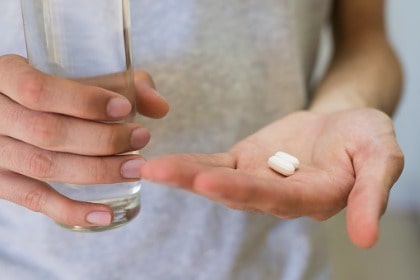
- having a previous history of GI injury
- advanced age
- concurrent use of (taking at the same time) medications such as aspirin, anticoagulants like heparin or warfarin, corticosteroids, and selective serotonin reuptake inhibitors (SSRI – anti-depressant) drugs
Not only does there need to be a greater awareness of these potential risks, but awareness of less-risky alternatives for helping to manage minor body aches and pain where appropriate.
5 of the Best Essential Oils for Pain Relief
Enter essential oils: a much safer method of delivering soothing relief right to the area where it is needed and bypassing the GI tract.
The best essential oils for pain relief are those proven to provide comfort to sore, tired, aching, overworked muscles and joints. You can use these essential oils solo or combine two or more for a synergistic support against body aches and pains. Here are 5 of the best essential oils for pain relief:
- Ginger (Zingiber officinale)
- Wintergreen (Gaultheria procumbens)
- Rosemary (Rosmarinus Officinalis)
- Clove (Syzygium aromaticum)
- Frankincense (Boswellia carterii)
1. Ginger (Zingiber officinale)
Ginger has five millennia (yes, that’s 5,000 years!) of historical use. This warming, stimulating, and aromatic oil has been used extensively for digestive health, improving circulation, boosting energy, and for pain relief.
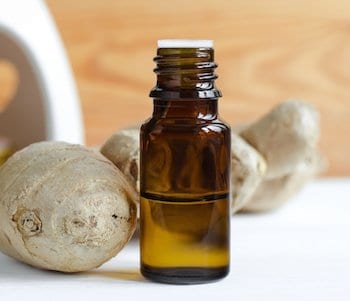
2013 research [2] found ginger essential oil to have anti-inflammatory and antioxidant properties, as well as antinociceptive action. Pain specialists consider antinociception to be the best form of pain relief because it works by blocking the detection of pain by nerves.
When painful menstrual cramping is a problem, ginger can be of assistance. A 2012 clinical study [3] followed 120 students, all of whom suffered severe menstrual cramps. The students were divided into two groups; one that received a placebo and one that took ginger capsules internally two days prior to the commencement of their periods, and for three days during their periods. Researchers found that those in the ginger group had significant easing of intensity and duration of pain.
If the pain you are experiencing is accompanied by inflammation, ginger is beneficial here, as well. A 2014 study [4] found that among seven different plants examined, ginger exhibited the highest anti-inflammatory activity. Indeed, a 2016 study [5] also investigated the anti-inflammatory properties of ginger essential oil on rats with rheumatoid arthritis. Researchers discovered that ginger oil prevented chronic joint inflammation in the rats.
2. Wintergreen (Gaultheria procumbens)
Wintergreen is an evergreen shrub with huge benefits for painful, aching muscles and joints. It is excellent for the temporary relief of backaches, muscle or joint pain caused by sprains, strains, arthritis, and bruising. It offers relief in two main ways:
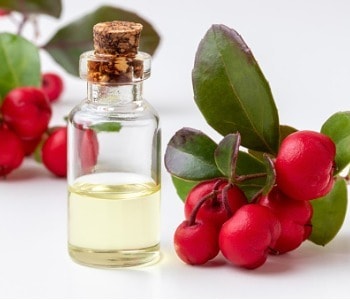
- The primary phytochemical present in wintergreen is methyl salicylate. It is this component (also found in birch bark) that Mother Nature must have intended for us to use for pain relief. It’s rather like spreading aspirin right into your skin. In fact, when aspirin was first synthesized by Bayer in the late 1890s, it was this phytochemical that was copied in the lab to create salicylic acid, a patentable substance [6,7].
- Wintergreen oil is also highly anti-inflammatory, helping to relieve much of the inflammation that often attends injuries. Wintergreen inhibits the production of pro-inflammatory cytokines (chemical messengers) such as TNF-alpha, interleukin-6, and interleukin-1-beta. It also suppresses the activation of a signaling pathway known as NF-kB. The effects of wintergreen have been described as similar to those of cyclooxygenase (COX) inhibitors from NSAIDs [8].
Wintergreen extracts are often present in over-the-counter muscle rubs, sports creams, and liniments for these two important reasons.
3. Rosemary (Rosmarinus officinalis)
Rosemary also has centuries of historical use going back to the Greeks and Romans. It was used extensively for pain relief, memory enhancement, and for cleansing the air of “evil vapors.”
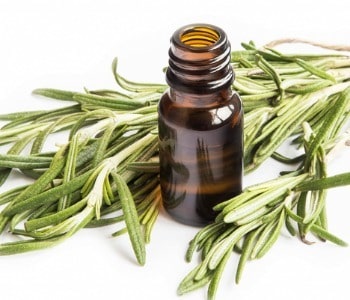
A 2000 study [9] found that it was the presence of the phytochemical 1,8-Cineole that conferred anti-inflammatory and antinociceptive (pain blocking) properties in rosemary oil. Remember that antinociception is better than just relieving pain because it blocks a nerve’s ability to detect pain.
A 2015 animal study [10] found that rosemary essential oil had analgesic effects and combined well with both codeine and paracetamol.
Does it work in humans, though? Indeed it does, according to researchers. A 2017 clinical study [11] found that for patients undergoing dialysis and having problems with pain, topical application of rosemary (menthol was also used) alleviated the severity and frequency of musculoskeletal pain.
4. Clove (Syzygium aromaticum)
Before dentists had modern numbing agents like procaine (Novocaine®), they applied clove oil topically to the area on which they were working. Clove has two main phytochemicals that are responsible for the pain blocking, anti-inflammatory, and anesthetic effects – eugenol and beta-caryophyllene.
The phytochemicals from clove oil are so effective at blocking pain and relieving inflammation, researchers have been working on ways to synthesize them [12].
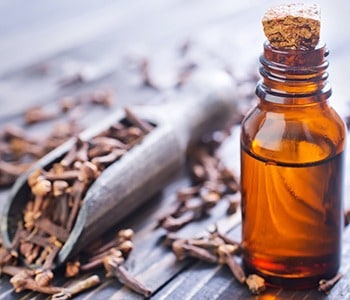
Studies done in 2009 [13] and 2016 [14] with animals found that eugenol had significant antinociceptive (pain-blocking) and anti-inflammatory effects.
Clove also appears to be helpful for period pain. A small 2013 clinical trial [15] with nursing students suffering from menstrual pain showed that abdominal massage using cinnamon, clove, rose, and lavender essential oils was effective in relieving painful cramping.
A 2001 study [16] investigated the anesthetic effects of the phytochemical beta-caryophyllene. Researchers found that that beta-caryophyllene exerted both in vitro (in the test tube) and in vivo (in the body) local anesthetic effects comparable to those of procaine.
5. Frankincense (Boswellia carterii)
Frankincense was one of the best-known oils and resins in ancient times. There are more than 50 references to frankincense in the Christian Bible. Frankincense has been used down through the centuries for its muscle relaxing, healing, and anti-depressant properties.
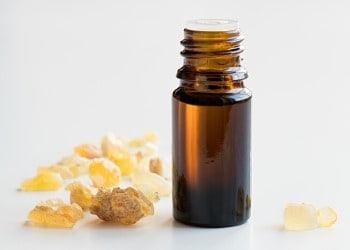
Modern research shows us that frankincense does much more than that, however. In addition to those benefits, frankincense also has immune-stimulating activity [17], battles fatigue [18], fights inflammation [19], helps to promote joint health, and has been studied as a treatment for osteoarthritis [20,21].
Frankincense combined with ginger may also be beneficial for heavy menstrual periods. A small 2019 clinical trial [22] investigated the use of frankincense and ginger for 102 women with heavy menstrual bleeding. All patients received ibuprofen and either frankincense and ginger, or a placebo. Decreased duration of menstrual bleeding and an increased improvement in quality of life was experienced in the frankincense and ginger group, but not the placebo group.
4 Tips For Using Essential Oils for Pain Relief
Here are ways you can use essential oils for pain relief individually or combine two or more to make a blend:
Editor’s Note: Organixx used to carry an essential blend called Relief that was a blend of ginger, wintergreen, rosemary, clove, and frankincense essential oils. If you have any Organixx Relief Essential Oil blend, these are also some ways you can use it.
- For Muscle and Joint Pain
Apply topically to area of concern, rubbing in thoroughly. Dilute with an organic carrier oil like coconut, almond, avocado, or hemp (heavily if you have sensitive skin). If using fairly frequently (as in hourly), it is best to dilute heavily with a carrier oil to avoid skin sensitivity. We suggest using 5 drops of essential oil per teaspoon of carrier oil. For any persistent pain, always consult with your doctor. - For Respiratory Conditions and Congestion
Place a couple drops of essential oil into your palms, rub them together, and place hands over your nose and mouth. Be careful to avoid your eyes, which are very sensitive to the vapors. Deeply breathe in the oils for a few moments, holding the vapor in your lungs for 5-10 seconds (or as long as you can). This is a great way of getting the essential oils into your lungs and bloodstream and working quickly to relieve chest and nasal congestion. - For Menstrual Cramps/Period Pain
Apply topically to the abdominal area and low back, diluting with an organic carrier oil like coconut, almond, or hemp as described above in Tip #1. - Headaches.
Using a cool mist ultrasonic diffuser, diffuse to help ease headaches. If headache persists, see your doctor.
Words of Caution When Using Essential Oils for Pain
Never apply essential oils anywhere near your eyes, the inside of the ears, or to other sensitive regions of the body.
Women who are pregnant or breastfeeding should NOT use essential oils without first consulting with a qualified healthcare provider. While some essential oils are safe for children and pets, others are harmful. Again, always seek guidance from a qualified practitioner.
Finally, essential oil products vary greatly between makers in purity, strength, and quality. Be sure to only purchase organic essential oils from reputable companies.
The powerhouse trio of herbs in Magi-Complexx Essential Oil provides the strongest, most synergistic healing effect, helping sufferers of arthritis pain, constant muscle aches and pains, neuropathy, systemic inflammation, slowed wound healing, circulatory challenges, as well as skin irritations like eczema, psoriasis, and acne.
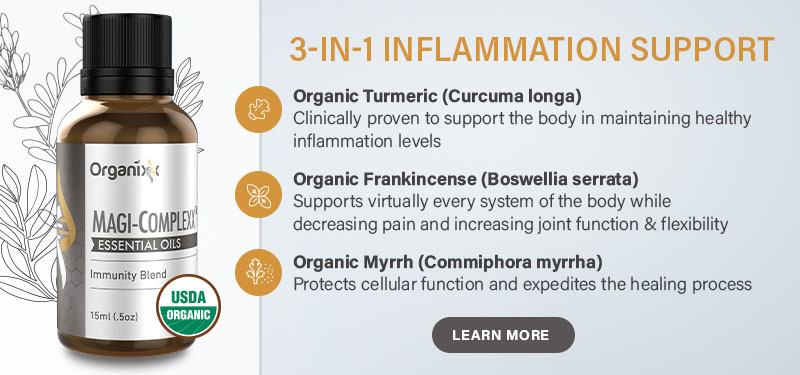
“Bones are known to sequester the heavy metal lead, contamination with which is widespread throughout the modern environment. Such sequestered lead can then be mobilized from the bones. We therefore hypothesized that bone broth might carry a risk of being contaminated with lead.”
J. A. Monro, et al., The risk of lead contamination in bone broth diets
Bone broth is one of the healthiest foods you could add to your everyday routine. It has been shown to lower inflammation, heal the gut, and much more. There are some guidelines you must adhere to, however, in order to make the absolute most out of the bone broth you prepare. At the very top of the list of things you can do is to make sure that all of the ingredients you use for your broth are 100% organic and chemical-free.
Read on to learn more about the risks of using commercial animal products in bone broth and some tips to help you make the most nutritious and toxin-free broth as possible.
Why You Have to Go 100% Organic with Your Bone Broth
“The heavy metals such as lead and cadmium that are present in commercial broth or soup were found herein to have concentrations in the range of a few micrograms per serving.”
Department of Safety, Health and Environmental Engineering, National Kaohsiung First University of Science and Technology, Kaohsiung, Taiwan (Essential and toxic metals in animal bone broths)
Bone broth is made by boiling animal bone for long periods of time, usually sourced from beef, chicken, or fish. Most experts advise that the best bone broths are boiled for at least 12 hours, although some people boil bones for up to 24 hours, or even 36 hours. Bone broths that are boiled in a pressure cooker (e.g., Instant Pot®) usually cook for about three hours.

Bones are boiled for such a long time for a very specific reason. Most of the nutrition that can be found in bone broth comes from the marrow and cartilage of the animal. These parts are very dense and it takes hours of boiling for bones to soften enough so that all that good stuff (e.g., key amino acids and essential minerals), can seep out into your broth.
If you don’t boil the bones long enough, you may have a hearty stock that will be good for stews and sauces, but it will not be filled with the multifaceted healing potential found in true bone broth.
Bone marrow, in particular, which is produced inside the hollow of the bones, is perhaps the most nutrient-dense component of all. Marrow contains many health-promoting substances such as collagen, linoleic acid, glucosamine, glycine, and proline.
These substances have been linked to lowering inflammation, helping with joint function, healing the gut, and promoting healthy skin and hair [1].
There is a catch to all this good news, however. The fatty marrow of the bones is precisely the location where major toxins tend to collect in conventionally raised animals.
The Reality of Commercial Meats and Toxins
“Heterocyclic amines (HCAs) and polycyclic aromatic hydrocarbons (PAHs) are chemicals formed when muscle meat, including beef, pork, fish, or poultry, is cooked using high-temperature methods.“
National Cancer Institute, Chemicals in Meat Cooked at High Temperatures and Cancer Risk

The key component of making an effective, nutritious broth is to use bones that are 100% organic and come from grass-fed, free-range animals. Here are a few reasons why this part matters a lot.
In 2016, the World Health Organization’s International Agency for Research on Cancer supported the fact that the consumption of commercial meat is linked to a higher risk of cancer [2].
The main reason for the connection is that eating commercial meat (i.e., meat from animals fed commercial grains and raised in tight quarters), exposes consumers to unhealthy amounts of heavy metals, pesticides, unnecessary antibiotics and hormonal substances, and even GMOs.
Are There Antibiotics in Your Meat?
Unfortunately, the United States has some of the loosest regulations regarding commercial meat additives in the world.
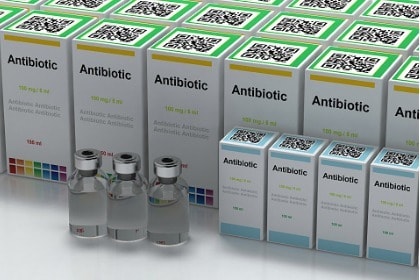
Most of the antibiotics used in the agriculture industry come in the form of penicillin and the tetracyclines administered as antimicrobials to fight infections in unsanitary conditions and as hormonal agents to increase meat production [3].
According to a 2016 report put out by the U.S. Food and Drug Administration, 62% of all antibiotics sold in the U.S. are labeled as “medically important.”
Out of these antibiotics, 70% are sold to the meat production industry, mainly for cattle, poultry, and pork productions. In addition, during the six years between 2009 and 2015, “agri-pharma” antibiotic sales rose by 26% in general [4].
Stay Away From Ham Bones for Your Bone Broth
As a quick (but important) side note about meat types, keep in mind that it is very difficult for pork products, in general, to be completely free from toxins, especially antibiotics. This includes ham hocks and other boney parts of the swine that you may consider putting in your pot.

The reason being that the most animal-related pharmaceutical antibiotics go to the pork industry.
An investigative study of one of the top commercial pork operations in the world found an inconceivable number of pigs, close to half a million, living under a single roof. The animals were eating and defecating in the same place. Heavy antibiotic use is the only way that animals can survive such conditions without spreading major disease [8].
Agribusinesses also have the goal of fattening animals up as fast as possible, adding another incentive to administer even more drugs to swine.
Glyphosate in Food is a Growing Concern
Here’s yet another reason why organic matters. New research may be discovering the mechanisms through which the herbicide glyphosate (found in the common weed killer Roundup®) sprayed on grain crops used for animal feed may eventually make its way into the system of the actual animal… and thus eventually into you.
You may already know that bone broth contains large amounts of collagen, which is made of glycine as well as other health-promoting essential amino acids.
A 2015 investigation conducted at the Massachusetts Institute of Technology (MIT) found that glyphosate has the ability to disrupt specific pathways usually involved in glycine synthesis. Glyphosate basically takes the place of this amino acid in the body, acting as an “analogue” or mimic of glycine in the body [5].
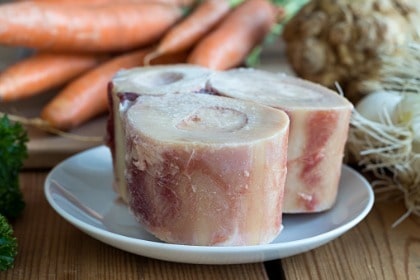
Toxins in antibiotic residue, pesticides, and heavy metals tend to seep into fat molecules more than other areas of the body and this is true for animals as well as humans. This means that if a meat source contains toxins, it is going to be in the fattest areas, including the marrow [6].
Recent studies confirm that many meat toxins do wind up in bone broth. A 2017 report published in the journal Food and Nutrition Research found that bone broth soup made with commercial (non-organic) animal bones contained levels of mercury, cadmium, aluminum and lead that were high enough to raise concern [7].
GMO expert and food activist Jeffrey M. Smith, founder of the Institute for Responsible Technology, had this to say about glyphosate and bone broth in a 2019 interview with Organixx.
“If you’re doing bone broth and you’re taking bones from animals that have been fed largely Roundup Ready soy or corn or canola meal or cotton meal or alfalfa – these are the 6 main GMOs. All of them are basically Roundup Ready … So there’s a tremendous amount of Roundup going into the animal. Moving into the bone. Now you take those bones and then you boil it and it ends up in the water as it’s water-soluble and then you put it into a capsule. This is not something you want to do.”
Jeffrey M. Smith
Your Other Bone Broth Ingredients Should Also Be Organic
It’s important that the other components of your bone broth also stay as pure as possible for your health and safety. It goes without saying that all vegetables, vinegar, and spices you may want to put in your broth should be 100% organic.
The water you use as the base for your broth should be fresh, clean, and chemical-free. Many toxins do not dissipate through boiling and may even intensify when in steam or vapor form [9]. For this reason, always use fresh, filtered water that is free of fluoride, chlorine, and heavy metals for your broth.
What Type of Cooking Pot Are You Using?

Finally, take care to use a cooking pot that is free from heavy metals as well. The best type to cook bone broth in is a stainless steel soup pot. Other safe options are cast iron (if added iron is not a concern for you) or ceramic (such as for a crockpot).
Pressure cookers such as the InstantPot are also suitable if obtained from a company that tests for heavy metals and guarantees their products are toxin-free. Never use non-stick surface cookware or pots made of aluminum for making bone broth [10].
Be Safe as Well as Healthy With Bone Broth
Finally, don’t just assume that the bones at your local health food store or butcher are organic and toxin-free. Always ask about the origins of the bones you buy and/or contact the store’s meat provider directly to ensure the bones you’re using to make bone broth at home come from free-range, non-GMO fed livestock and that no antibiotics were used when raising the animals.
However you get your bone broth, just make sure it is safe as well as nutritious! Then you’re guaranteed to have a powerful supplement to put to good use in your health and healing toolbox.
Organixx Clean Sourced Collagens blend contains five types of collagen from four sources. What’s more, it’s combined with targeted nutrients such as zinc, vitamin C, and vitamin B6 which specifically enhance the bioavailability and potency of collagen. Clean Sourced Collagens is formulated from the ground up to enhance and support your body’s natural ability to heal and rebuild itself from the INSIDE out.
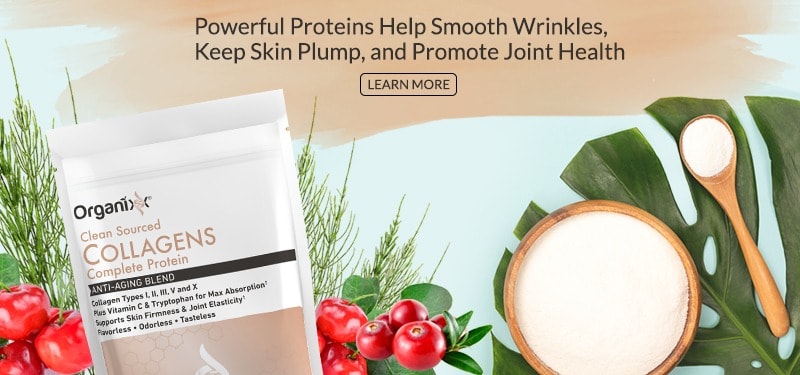
Guayusa (Ilex guayusa) is a type of holly plant that grows in northern parts of South America. For traditional peoples of the Amazon Rainforest (especially in parts of Ecuador), Guayusa has been a mainstay herb for centuries. While it has been virtually unknown in the West, more people are now “waking up” (literally!) to the benefits of guayusa for health and vitality [1].
Guayusa Benefits: What Makes It So Special?

Of all the amazing herbs out there for health and healing, many of them come from the rainforest. Current estimates are that well over 5,000 different species of plants and herbs being used for medicinal purposes come from the Amazon rainforest alone. Not to mention that many more are being discovered every day!
So, why focus on guayusa? Guayusa is unique in that it was virtually unknown to most Americans only a few short years ago. Now it is being hailed as a tonic for both body and brain.
Indeed, guayusa contains some unique properties and chemical combinations that make it spotlight worthy. In addition to a lower caffeine count than coffee (about 99 mg per 8 oz cup [2] to coffee’s 163 mg [3]), guayusa also contains L-theanine.
The Healing Benefits of L-Theanine
L-Theanine is a neuroprotective amino acid that is found in many herbs and teas, including guayusa. In research studies such as that done at the Unilever Food and Health Research Institute in the Netherlands in 2008 [4], L-Theanine was able to change brainwave patterns, even in relatively modest quantities. It moved them from beta waves to alpha waves.

Beta brain waves are synonymous with stress (high beta with chronic stress and hyper-alertness [5]). This is the state of “mind” where ill-health can take hold.
L-Theanine, on the other hand, has the ability to lower brainwaves to alpha, which is the frequency where focus, attention, creativity, and healing blossom.
L-Theanine is thought to promote a state of calm and focus but does not normally promote drowsiness in most people. The L-Theanine content in guayusa, in combination with moderate amounts of theobromine and caffeine, is why many people describe feeling “calm yet focused” after drinking guayusa tea or consuming it in another way.
Several studies have linked L-Theanine with reduced bouts of anxiety, including for those with diagnosed anxiety-centered mental conditions [6]. In addition, research has also discovered that L-Theanine paired with caffeine may increase attention and focus.

A 2010 report published in the journal Nutritional Neuroscience monitored young people who consumed L-Theanine and caffeine. The report authors stated that “(t)he combination of moderate levels of L-theanine and caffeine significantly improved accuracy during task switching and self-reported alertness…and reduced self-reported tiredness [7].”
L-Theanine found in guayusa may be helpful in reducing blood pressure as well. Other investigations have found that L-Theanine can help digestion, inflammation, sinusitis, and as a general immune booster [8].
Guayusa Provides Important Amino Acids & Antioxidants
Another reason why guayusa should be placed on the herbal shelf of anyone looking to improve health and increase focused energy is because of its amino acid and antioxidant content.
Key amino acids besides L-Theanine in guayusa include arginine, cysteine, glutamine, glycine, histidine, leucine, isoleucine, lysine, methionine, threonine, and valine [9].
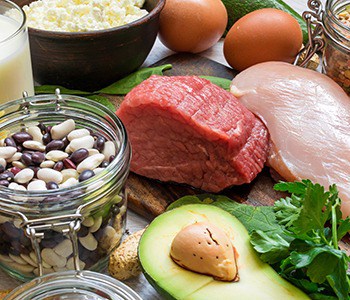
Amino acids are the building blocks of protein, and protein is vital for the body. If you take away the water, our bodies would be 75% protein! Sadly, many people today are deficient in key essential amino acids such as those mentioned above which form the building blocks of life.
High antioxidant levels in guayusa are equally as impressive. They come in the form of phytonutrients such as polyphenols, flavonoids and saponins, which all help to reduce inflammation, detoxify the body, and stimulate the immune system.
Of particular note is theobromine and caffeine, which are phytonutrient alkaloids [10] found in plants. Some experts state that guayusa has the second-highest antioxidant content [11] out there after cacao.
Can Substances in Guayusa Offer Help for Diabetes and Obesity?
Scientists have recently zeroed in on specific substances found in guayusa that may be beneficial for those with diabetes, obesity, and high blood pressure.
Guayusa contains a little-known but powerful health-promoting substance called chlorogenic acid. In a January 2018 study [12], chlorogenic acid was discovered to “modulate lipid metabolism and glucose in both genetically and healthy metabolic related disorders.” This suggests it may be helpful for weight loss as well.

Another substance found in guayusa may make it a useful herb for blood pressure regulation. It is called ursolic acid. A January 2019 report [13] published in the journal Food Research International studied the properties of both guayusa and its close cousin, yerba mate. They discovered that ursolic acid (found in both plants) helps to activate a protein called TGR5.
TGR5 is a “transcription factor” for diabetes, in that it controls how much genetic information goes from DNA to messenger molecules which control diabetes mechanisms. The report authors note that this is an exciting discovery because TGR5 is a key player in regulating insulin sensitivity and overall energy metabolism and expenditure.
Guayusa is a True “Superfood”
What makes a food a “superfood?” Antioxidant load that is off the charts, benefits to both the body and brain, and a long history of use by traditional peoples in the areas where these foods originate are some key components for what makes certain foods truly “super.” Using this definition, guayusa definitely fits the bill as a superfood.
According to TV personality and herbal researcher Chris Kilham [14], also known as the “Medicine Hunter,” guayusa tea has been a mainstay of everyday life for the native Jivaro people of the Amazon rainforest for centuries.
As Kilham describes it, “Historically the Jivaro would rise early, make a fire, boil a pot of guayusa leaves, drink the tea and tell stories. This practice helped to reinforce kinship and community, giving people an opportunity to come together and share stories [15].”
The Jivaro called guayusa the “Night Watchman” because it would help people stay awake, alert, and on their toes without making them drowsy or too wound-up. Indeed, it’s hard to connect (and tell stories) when you are jittery or when you are about to fall asleep.
Guayusa, taken as a tea or in capsule form, appears to have the perfect combination of substances to help our minds unwind as well as focus, not only in the rainforest but in this topsy-turvy place we call the modern world as well! It is also one of eight Amazon rainforest ingredients in our popular Organixx Brain Health 8 formula, along with other superstar brain ingredients such as bacopa and cinnamon.
Better Focus… Crystal-Clear Thinking… a Razor-Sharp Memory… ALL Are Within Your REACH! Each and every bottle of our Organixx Brain Health 8 formula contains a total of 8 superstar ingredients, straight from the AMAZON rainforest.



